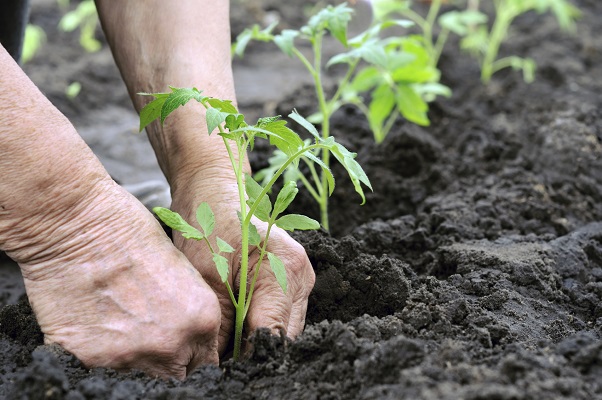Ipswich City Council is dedicated to greening the city as much as possible for the benefit of native fauna and flora, residents and our environment.
Many studies have been carried out which highlight the  numerous health benefits of gardening, including:
numerous health benefits of gardening, including:
- Reduces stress and anxiety
- Improves self-esteem and depression
- Decreases your risk of heart disease, stroke and diabetes
- Makes you happy
- Keeps your mind sharp
- Helps you sleep better
Why not get into gardening and find out all the wonderful health benefits for yourself!
Council runs a number of programs designed to assist Ipswich residents in planting beautiful gardens filled with native plant species that attract wildlife and invite relaxation.
Free Plant Program
Ipswich City Council provides a Free Plant Program each financial year to assist residents to develop a greener and more beautiful Ipswich.
Council endeavors to give away 120,000 plants per annum. Plants are proudly propagated and grown in Ipswich City Council's production nursery. Plant species are chosen and propagated to suit local climate and soil conditions.
As an Ipswich resident you are entitled to free plants every financial year under the Council's Free Plant Program.
For further information regarding the program and Ipswich City Council's nurseries refer to the Free Plant Program webpage.
Planting Tips and Information
The benefits of native plant species
Planting a range of different native plants, such as vines, ground covers, shrubs and trees, provides the food, shelter and other resources required by native animals. Council offers native locally grown plants suited to the vegetation and soil type of your property, ensuring a healthier garden with many benefits:
- Once established, only minimal garden maintenance is required
- Native gardens require less water, are frost tolerant and resilient to our harsh climate
- Local birds, butterflies, frogs and other fauna are attracted to native gardens
- Native gardens provide a food source and habitat for local fauna
- A variety of garden styles can be created, e.g. formal, informal and native edible gardens
- Insecticides and fungicides are not required as native plants adapt to local conditions
Native species available from council nurseries
Buckinghamia celsissima (common name: Ivory Curl)
Small to medium-sized native tree reaching heights of 6 - 8 metres and spread of 3 - 5 metres. Rounded growth habit with dark green leaves and bronze coloured new growth. Produces fragrant cream flowers summer through to autumn. Attracts birds and bees. Does well in full sun or partial shade and adapts to most soils.
Harpullia pendula (common name: Tulipwood)
Medium-sized native tree reaching heights of 7 - 9 metres and canopy spread of 2 - 4 metres. Fast growing with a dense crown and pale grey bark, greenish yellow flowers in summer followed by orange seed cases that open in winter to reveal the seed inside. Tolerates dry conditions, adapts to most soils and prefers full sun.
Cupaniopsis anacardioides (common name: Tuckeroo)
Medium-sized native tree reaching heights of 8 - 9 metres and spread of 6 - 8 metres. Excellent shade tree due to wide canopy. Glossy green leaves, produces yellow flowers followed by orange seeds. Suitable tree for most conditions and adapts to most soils, prefers part shade.
Xanthostemon chrysanthus (common name: Golden Penda)
Medium native tree reaching heights of 7 - 10 metres and spread of 6 - 8 metres. Glossy green leaves and reddish new growth with bright yellow flowers. Adapts to most soils, prefers full sun and can be frost tender.
Callistemon viminalis (common name: Dawson River Weeper)
Large shrub to small tree reaching heights of 5 - 7 metres and spreads of 3 - 4 metres. Green/grey foliage and weeping branches. Red bottle brush flowers appear through most of the year. Attracts birds and bees. Full sun or part shade, tolerates dry periods.
Hedging plants
While not all of these are native, they are not invasive and are easily maintained:
- Gardenia magnifica and florida
- Syzygium species / Acmena species
- Viburnum species
- Westringia species
Planting your free plants
- Dig a hole at least twice as wide and slightly deeper than the pot size.
- Loosen the soil at the sides, fill the hole with water and allow it to drain away.
- Gently remove the plant and place it in the hole (ensuring the top of the root ball is level with the surrounding ground) and backfill with the remaining soil.
- Press the backfill down with your hands and make a saucer-shaped depression to hold water.
- Sprinkle a small amount of organic fertiliser around the drip zone of the plant, water in well.
- Mulch with at least 75mm coarse organic material, e.g. cane mulch, dry grass clippings, keeping the mulch away from the stem of the plant.
- Water weekly for the first two months and prune as required to encourage bushier growth.